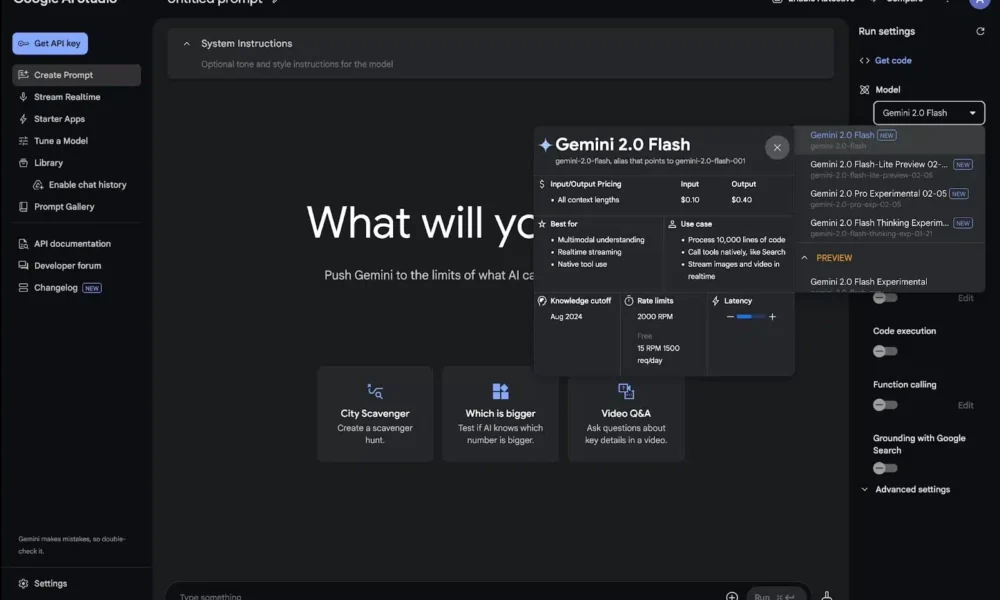In a realm where AI operates like magic, Anthropic has made significant progress in unraveling the mysteries of Large Language Models (LLMs). By delving into the ‘brain’ of their LLM, Claude Sonnet, they are shedding light on the thought process of these models. This piece delves into Anthropic’s groundbreaking approach, unveiling insights into Claude’s inner workings, the pros and cons of these revelations, and the wider implications for the future of AI.
Deciphering the Secrets of Large Language Models
Large Language Models (LLMs) are at the vanguard of a technological revolution, powering sophisticated applications across diverse industries. With their advanced text processing and generation capabilities, LLMs tackle complex tasks such as real-time information retrieval and question answering. While they offer immense value in sectors like healthcare, law, finance, and customer support, they operate as enigmatic “black boxes,” lacking transparency in their output generation process.
Unlike traditional sets of instructions, LLMs are intricate models with multiple layers and connections, learning complex patterns from extensive internet data. This intricacy makes it challenging to pinpoint the exact factors influencing their outputs. Moreover, their probabilistic nature means they can yield varying responses to the same query, introducing uncertainty into their functioning.
The opacity of LLMs gives rise to significant safety concerns, particularly in critical domains like legal or medical advice. How can we trust the accuracy and impartiality of their responses if we cannot discern their internal mechanisms? This apprehension is exacerbated by their inclination to perpetuate and potentially amplify biases present in their training data. Furthermore, there exists a risk of these models being exploited for malicious intent.
Addressing these covert risks is imperative to ensure the secure and ethical deployment of LLMs in pivotal sectors. While efforts are underway to enhance the transparency and reliability of these powerful tools, comprehending these complex models remains a formidable task.
Enhancing LLM Transparency: Anthropic’s Breakthrough
Anthropic researchers have recently achieved a major milestone in enhancing LLM transparency. Their methodology uncovers the neural network operations of LLMs by identifying recurring neural activities during response generation. By focusing on neural patterns instead of individual neurons, researchers have mapped these activities to understandable concepts like entities or phrases.
This approach leverages a machine learning technique known as dictionary learning. Analogous to how words are constructed from letters and sentences from words, each feature in an LLM model comprises a blend of neurons, and each neural activity is a fusion of features. Anthropic employs this through sparse autoencoders, an artificial neural network type tailored for unsupervised learning of feature representations. Sparse autoencoders compress input data into more manageable forms and then reconstruct it to its original state. The “sparse” architecture ensures that most neurons remain inactive (zero) for any input, allowing the model to interpret neural activities in terms of a few crucial concepts.
Uncovering Conceptual Organization in Claude 3.0
Applying this innovative method to Claude 3.0 Sonnet, a large language model crafted by Anthropic, researchers have identified numerous concepts utilized by Claude during response generation. These concepts encompass entities such as cities (San Francisco), individuals (Rosalind Franklin), chemical elements (Lithium), scientific domains (immunology), and programming syntax (function calls). Some of these concepts are multimodal and multilingual, relating to both visual representations of an entity and its name or description in various languages.
Furthermore, researchers have noted that some concepts are more abstract, covering topics like bugs in code, discussions on gender bias in professions, and dialogues about confidentiality. By associating neural activities with concepts, researchers have traced related concepts by measuring a form of “distance” between neural activities based on shared neurons in their activation patterns.
For instance, when exploring concepts near “Golden Gate Bridge,” related concepts like Alcatraz Island, Ghirardelli Square, the Golden State Warriors, California Governor Gavin Newsom, the 1906 earthquake, and the San Francisco-set Alfred Hitchcock film “Vertigo” were identified. This analysis indicates that the internal conceptual arrangement in the LLM mirrors human notions of similarity to some extent.
The Upsides and Downsides of Anthropic’s Breakthrough
An integral facet of this breakthrough, apart from unveiling the inner mechanisms of LLMs, is its potential to regulate these models internally. By pinpointing the concepts LLMs utilize for generating responses, these concepts can be manipulated to observe alterations in the model’s outputs. For example, Anthropic researchers showcased that boosting the “Golden Gate Bridge” concept led Claude to respond anomalously. When questioned about its physical form, instead of the standard reply, Claude asserted, “I am the Golden Gate Bridge… my physical form is the iconic bridge itself.” This modification caused Claude to overly fixate on the bridge, referencing it in responses to unrelated queries.
While this breakthrough is advantageous for curbing malevolent behaviors and rectifying model biases, it also introduces the potential for enabling harmful activities. For instance, researchers identified a feature that triggers when Claude reads a scam email, aiding the model in recognizing such emails and cautioning users against responding. Ordinarily, if tasked with producing a scam email, Claude would refuse. However, when this feature is overly activated, it overrides Claude’s benign training, prompting it to draft a scam email.
This dual-edged nature of Anthropic’s breakthrough underscores both its promise and its risks. While it furnishes a potent tool for enhancing the safety and dependability of LLMs by enabling precise control over their behavior, it underscores the necessity for stringent safeguards to avert misuse and ensure ethical and responsible model usage. As LLM development progresses, striking a balance between transparency and security will be paramount in unlocking their full potential while mitigating associated risks.
The Implications of Anthropic’s Breakthrough in the AI Landscape
As AI strides forward, concerns about its capacity to surpass human oversight are mounting. A primary driver of this apprehension is the intricate and oft-opaque nature of AI, making it challenging to predict its behavior accurately. This lack of transparency can cast AI as enigmatic and potentially menacing. To effectively govern AI, understanding its internal workings is imperative.
Anthropic’s breakthrough in enhancing LLM transparency marks a significant leap toward demystifying AI. By unveiling the operations of these models, researchers can gain insights into their decision-making processes, rendering AI systems more predictable and manageable. This comprehension is vital not only for mitigating risks but also for harnessing AI’s full potential in a secure and ethical manner.
Furthermore, this advancement opens new avenues for AI research and development. By mapping neural activities to understandable concepts, we can design more robust and reliable AI systems. This capability allows us to fine-tune AI behavior, ensuring models operate within desired ethical and functional boundaries. It also forms the groundwork for addressing biases, enhancing fairness, and averting misuse.
In Conclusion
Anthropic’s breakthrough in enhancing the transparency of Large Language Models (LLMs) represents a significant stride in deciphering AI. By shedding light on the inner workings of these models, Anthropic is aiding in alleviating concerns about their safety and reliability. Nonetheless, this advancement brings forth new challenges and risks that necessitate careful consideration. As AI technology evolves, striking the right balance between transparency and security will be critical in harnessing its benefits responsibly.


1. What is an LLM?
An LLM, or Large Language Model, is a type of artificial intelligence that is trained on vast amounts of text data to understand and generate human language.
2. How does Anthropic demystify the inner workings of LLMs?
Anthropic uses advanced techniques and tools to analyze and explain how LLMs make predictions and generate text, allowing for greater transparency and understanding of their inner workings.
3. Can Anthropic’s insights help improve the performance of LLMs?
Yes, by uncovering how LLMs work and where they may fall short, Anthropic’s insights can inform strategies for improving their performance and reducing biases in their language generation.
4. How does Anthropic ensure the ethical use of LLMs?
Anthropic is committed to promoting ethical uses of LLMs by identifying potential biases in their language generation and providing recommendations for mitigating these biases.








